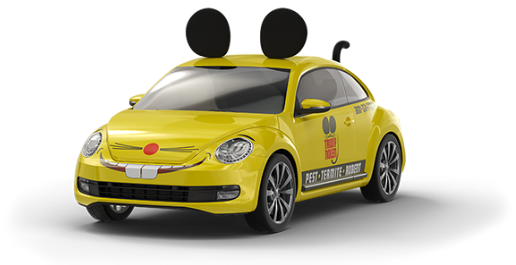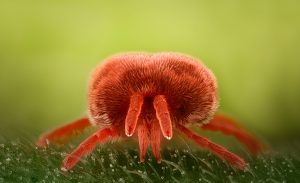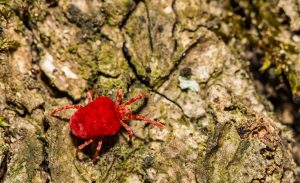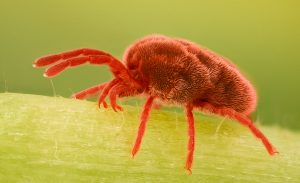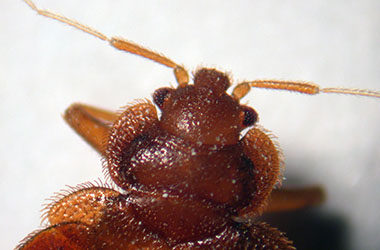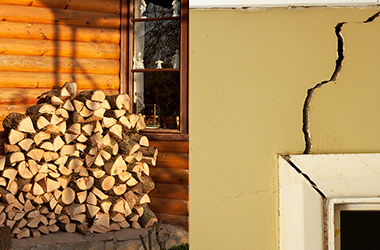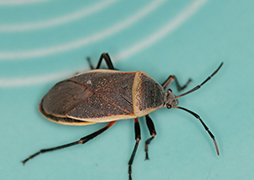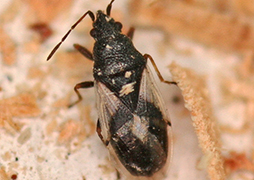
Red Bug Facts
- Other names: the scientific name is Trombicula, a genus of harvest mites; they are called chiggers in their larval stage
- Size: nearly microscopic in their larval stage, measuring 0.4 mm ; in their adult stage, mites are about 1.27 mm long
- Color: chrome-orange in larval stage; orange, yellow, or red in the adult stage
- Appearance: adult mites have hairy bodies and 8 legs; in the larval stage they only have 6 legs
The Parasitic Phase of Red Bugs
Harvest mites are part of a large and widely distributed family of mites whose nymphs and adults feed on early stages of small arthropods but whose larvae include the chiggers and are parasites on terrestrial vertebrates. In their larval stage, they attach to various animals, including humans and other animals such as pets, and feed on skin, often causing itching. The larval stage of the mite is the only parasitic stage.
Life Cycle of Red Bugs
Adult mites overwinter in soil and other protected places and emerge in spring to lay eggs. The adult female mites lay eggs in the soil, and when these eggs hatch chigger larvae climb up onto vegetation from which they can attach themselves to a passing host human or animal. After the larva is fully fed, often requiring up to 4 days, larvae drop off the host, leaving a red welt, and transform into eight-legged nymphs, which mature to the adult stage. The life cycle is about 2 months, with adult females living up to one year and producing multiple generations.
- How to Get Rid of Them
- Infestation
- Bites and Treatment
Bugs Photos
4 Seasons Pest Control

Satisfaction Guarantee
What it includes*
-
Ants
-
Crickets
-
Fleas
-
Mice
-
All Roaches
-
Scorpions
-
Spiders
-
Ticks
-
Wasps
-
Other*
